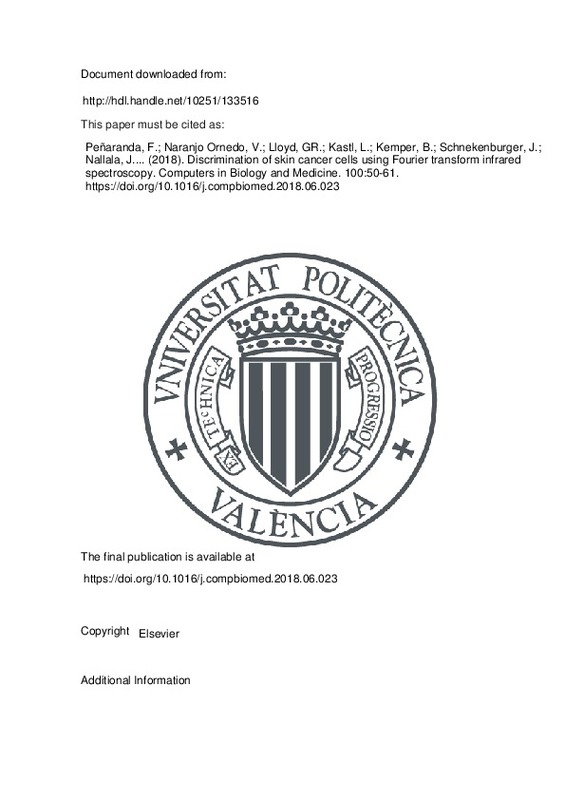JavaScript is disabled for your browser. Some features of this site may not work without it.
Buscar en RiuNet
Listar
Mi cuenta
Estadísticas
Ayuda RiuNet
Admin. UPV
Discrimination of skin cancer cells using Fourier transform infrared spectroscopy
Mostrar el registro completo del ítem
Peñaranda, F.; Naranjo Ornedo, V.; Lloyd, GR.; Kastl, L.; Kemper, B.; Schnekenburger, J.; Nallala, J.... (2018). Discrimination of skin cancer cells using Fourier transform infrared spectroscopy. Computers in Biology and Medicine. 100:50-61. https://doi.org/10.1016/j.compbiomed.2018.06.023
Por favor, use este identificador para citar o enlazar este ítem: http://hdl.handle.net/10251/133516
Ficheros en el ítem
Metadatos del ítem
| Título: | Discrimination of skin cancer cells using Fourier transform infrared spectroscopy | |
| Autor: | Lloyd, Gavin R. Kastl, Lena Kemper, Björn Schnekenburger, Jürgen Nallala, Jayakrupakar Stone, Nick | |
| Entidad UPV: |
|
|
| Fecha difusión: |
|
|
| Resumen: |
[EN] Fourier transform infrared DO spectroscopy is a highly versatile tool for cell and tissue analysis. Modern commercial FTIR microspectroscopes allow the acquisition of good-quality hyperspectral images from cytopathological ...[+]
|
|
| Palabras clave: |
|
|
| Derechos de uso: | Reserva de todos los derechos | |
| Fuente: |
|
|
| DOI: |
|
|
| Editorial: |
|
|
| Versión del editor: | https://doi.org/10.1016/j.compbiomed.2018.06.023 | |
| Código del Proyecto: |
|
|
| Agradecimientos: |
|
|
| Tipo: |
|







![[Cerrado]](/themes/UPV/images/candado.png)


